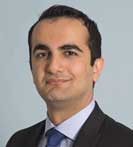Since the first minimally invasive glaucoma surgery (MIGS) device emerged in 2012, the landscape of glaucoma management has transformed dramatically. What began as isolated procedures targeting the trabecular meshwork has evolved into a comprehensive treatment philosophy known as “interventional glaucoma.” This approach prioritizes early surgical intervention to preserve vision while reducing medication burden, recognizing that proactive management can fundamentally alter disease trajectory.
Yet, despite more than a decade of MIGS innovation and growth, a critical limitation has persisted. Although the uveoscleral pathway accounts for up to 40% of aqueous drainage and serves as the target for prostaglandin analogues (our most prescribed medications), it has remained beyond surgical reach.1-3 Recent advances in biointerventional technology now address this gap, allowing surgeons to enhance natural drainage pathways and complete the interventional paradigm.
The Interventional Glaucoma Philosophy
Interventional glaucoma extends beyond individual procedures to encompass a comprehensive treatment mindset. Patient education forms the cornerstone, beginning at diagnosis. A surgeon might explain: “Your eye has two natural drainage systems. During your care, we can enhance both pathways surgically. When you need cataract surgery, we’ll improve the first pathway. If your glaucoma progresses, we can now address the second pathway as well.”
This framing positions surgery as a tool for maintaining vision rather than a last resort, fundamentally changing patient expectations and creating a partnership approach to care.
Dual Outflow: Nature’s Design
The eye maintains pressure through two complementary drainage routes. The trabecular pathway, handling 60% to 70% of outflow in adults, directs fluid through microscopic channels into Schlemm’s canal.² The uveoscleral pathway allows fluid to percolate through spaces between ciliary muscle fibers before absorption into uveal blood vessels.³
Prostaglandin analogues specifically target the uveoscleral route by remodeling tissue architecture to enhance flow.¹ Their clinical success validates this pathway’s therapeutic potential, yet until recently, surgeons could only access the trabecular route.
The launch of AlloFlo Uveo (Iantrek, Inc.) at the American Academy of Ophthalmology 2025 meeting represents the only commercially available solution for surgical uveoscleral enhancement. This biointerventional technology allows surgeons to complete the natural outflow enhancement paradigm through minimally invasive techniques.
The Clinical and Scientific Rationale
Research consistently shows that 30% to 70% of patients struggle with drop regimens, with adherence worsening over time.4-5 Physical limitations compound these challenges, as arthritis makes bottle manipulation difficult and cognitive changes affect dosing schedules. Preservatives in chronic medications damage the ocular surface, creating a cycle in which treatment side effects discourage compliance. The cumulative cost of medications over decades often exceeds surgical expenses, while the daily burden impacts quality of life beyond economics.
Coding and Reimbursement for Uveoscleral Enhancement
The American Academy of Ophthalmology has endorsed the dual-code billing approach for uveoscleral enhancement procedures:
• CPT 66740 Cyclodialysis
• CPT 67255 Scleral reinforcement
Standalone procedures reimburse at approximately $900 (national average professional fee). When performed with cataract surgery, combined reimbursement averages $1,100.
Documentation should detail both procedural components. These established codes avoid the prior authorization challenges often associated with new technologies.
The remarkable success of prostaglandin analogues provides the scientific foundation for surgical uveoscleral enhancement. These medications, our most potent topical agents, increase uveoscleral outflow by stimulating enzymes that break down collagen between muscle bundles.¹ They may also relax the ciliary muscle and trigger cellular changes that facilitate fluid movement.⁶ Their efficacy validates the therapeutic potential of this pathway.
Previous surgical attempts at uveoscleral enhancement failed because they couldn’t maintain the created space. Traditional cyclodialysis procedures succumbed to aggressive healing responses that closed the drainage cleft. Modern biointerventional techniques overcome these obstacles by combining precise cleft creation with biocompatible tissue placement. The allogeneic material acts as a biological spacer, maintaining drainage while integrating naturally with surrounding tissues.
Experience with MIGS reveals another important consideration: efficacy often diminishes over time. Among the millions of procedures performed, many patients eventually require additional intervention. Rather than reverting to medications with their associated challenges, surgeons can now offer sequential angle-based procedures that maintain the benefits of surgical management while addressing both natural outflow pathways.
Clinical Evidence
The CREST registry followed 117 eyes through 12 months, documenting both safety and efficacy of biointerventional uveoscleral surgery. Results demonstrated meaningful IOP reduction from a medicated baseline of 20.2±6.0 mmHg to 13.9±3.9 mmHg, representing a 31% decrease comparable to prostaglandin therapy. Medication requirements dropped from 1.4±1.3 to 0.8±0.9 drops daily.⁷
The safety profile proved exceptional, with no sight-threatening complications and only 3.2% requiring additional surgery to reach target pressure. Two-year data confirmed these results remain stable, addressing historical concerns about durability.⁷
Practical Implementation
Patient selection drives successful outcomes. Strong candidates include those with inadequate response to initial MIGS, intolerance to medications, or preference for surgical management. The procedure adapts to various clinical scenarios and can accompany cataract surgery or stand alone.
Technical proficiency develops quickly, with most surgeons achieving consistent results within 5 to 10 cases. The procedure is highly intuitive and integrates efficiently into surgical schedules. Preoperative planning should consider previous angle surgery and residual anatomy. Surgeons report that visualization remains excellent in most post-MIGS eyes, with the supraciliary space typically accessible despite previous trabecular interventions.
The Business Case
Uveoscleral enhancement offers unique economic advantages through its additive nature. Unlike device substitutions, this procedure expands surgical options without cannibalizing existing volume. A practice performing three MIGS procedures weekly could add three uveoscleral enhancing surgeries, generating $2,700 weekly in additional professional fees, translating to $131,000 annually. Combined with cataract surgery, reimbursement approaches $1,100, nearly double the cataract fee alone.
The multi-interventional cyclodialysis procedure with scleral reinforcement is billed with category I CPT codes 66740 for the cyclodialysis step and 67255 for scleral reinforcement step, as per the AAO reimbursement guidance (https://www.aao.org/practice-management/news-detail/coding-scleral-reinforcement-cyclodialysis). This coding approach is consistent with the pre-2014 coding of a tube-shunt procedure (66180) with scleral reinforcement (67255) prior to 67255 being bundled into 66180 due to a high frequency of the two codes being reported together.
Beyond individual procedure economics, comprehensive angle surgery strengthens practice positioning. Practices offering the full spectrum of interventional options attract referrals while differentiating themselves in competitive markets.
Future Directions
Complete angle surgery enables individualized treatment planning based on patient age, disease severity, and outflow characteristics. Most importantly, comprehensive surgical options expand the therapeutic window. Early intervention becomes more attractive when multiple procedures remain available, minimizing lifetime medication exposure and preserving conjunctiva for future intervention.
Conclusion
Surgical access to the uveoscleral pathway completes a decade-long evolution in glaucoma management. By offering complete surgical management of aqueous outflow, we fundamentally change the treatment paradigm. Early patient education, strategic surgical timing, and sequential interventions can now address disease progression without reverting to the limitations of medical therapy. With both outflow pathways now accessible, the future of glaucoma management has arrived. OM
References
1. Weinreb RN, Toris CB, Gabelt BT, Lindsey JD, Kaufman PL. Effects of prostaglandins on the aqueous humor outflow pathways. Surv Ophthalmol. 2002;47 Suppl 1:S53-S64. doi:10.1016/s0039-6257(02)00306-5
2. Allingham RR, de Kater AW, Ethier CR. Schlemm’s canal and primary open angle glaucoma: correlation between Schlemm’s canal dimensions and outflow facility. Exp Eye Res. 1996;62(1):101-109. doi:10.1006/exer.1996.0012
3. Bill A. The aqueous humor drainage mechanism in the cynomolgus monkey (Macaca irus) with evidence for unconventional routes. Invest Ophthalmol. 1965;4:911-919.
4. Newman-Casey PA, Robin AL, Blachley T, et al. The most common barriers to glaucoma medication adherence: a cross-sectional survey. Ophthalmology. 2015;122(7):1308-1316. doi:10.1016/j.ophtha.2015.03.026
5. Tsai JC, McClure CA, Ramos SE, et al. Compliance barriers in glaucoma: a systematic classification. J Glaucoma. 2003;12(5):393-398. Tsai JC, McClure CA, Ramos SE, et al.
6. Toris CB, Gabelt BT, Kaufman PL. Update on the mechanism of action of topical prostaglandins for intraocular pressure reduction. Surv Ophthalmol. 2008;53 Suppl 1:S107-120.
7. Ianchulev T, Weinreb RN, Calvo EA, et al. Bio-Interventional Cyclodialysis and Allograft Scleral Reinforcement for Uveoscleral Outflow Enhancement in Open-Angle Glaucoma Patients: One-Year Clinical Outcomes. Clin Ophthalmol. 2024;18:3605-3614. Published 2024 Dec 6. doi:10.2147/OPTH.S496631










